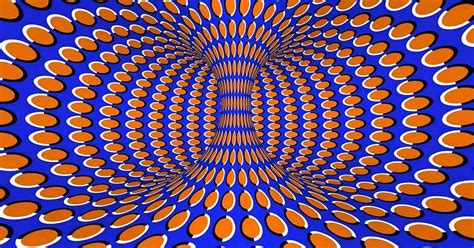
An iconic optical illusion, the “My Wife and My Mother-in-Law” drawing, isn’t just a visual trick; it might reveal insights into how your brain processes information and perceives the world, according to recent observations. The initial perception of the image – whether you see a young woman or an older woman first – could correlate with age-related cognitive biases, suggesting a link between visual perception and individual experiences.
The famous ambiguous figure, first published in 1915 by cartoonist William Ely Hill, has resurfaced in the context of perception and cognitive psychology. Recent discussions highlight how the speed and ease with which one identifies either the young woman or the older woman in the image can be influenced by factors such as age and prior experiences. This simple illusion provides a fascinating window into the complex workings of the human brain and how it interprets visual information.
The Illusion Explained
The “My Wife and My Mother-in-Law” illusion cleverly combines lines and shading to present two distinct images within one drawing. One perspective reveals a young woman, seen from the side, looking away. The other perspective portrays an older woman with a prominent nose and chin, looking downwards. The ambiguity lies in the brain’s ability to interpret the same visual cues in different ways, creating two entirely different perceptions.
The original drawing was published in Puck magazine over a century ago and has since become a staple in psychology and visual perception studies. Its enduring appeal stems from its ability to challenge our understanding of how we see and interpret the world around us. The illusion demonstrates that perception is not merely a passive reception of sensory data but an active process of interpretation and construction.
Age and Perception: A Potential Link
While the illusion has been around for decades, recent observations suggest a potential correlation between the age of the observer and their initial perception of the image. Some studies and anecdotal evidence indicate that younger individuals tend to see the young woman first, while older individuals are more likely to see the older woman first.
This phenomenon could be attributed to several factors, including age-related cognitive biases and differences in visual processing. As we age, our brains accumulate more experiences and develop certain cognitive patterns. These patterns can influence how we interpret visual information, leading to different perceptions of ambiguous figures like the “My Wife and My Mother-in-Law” illusion.
“It’s not a definitive test of your brain type, but it can offer insights into how your brain prioritizes and processes visual information,” explains a cognitive psychologist. “The key is that our brains are constantly making predictions based on past experiences, and these predictions can influence what we see.”
Beyond Age: Other Influencing Factors
While age may play a role, it’s important to note that other factors can also influence perception of the illusion. These factors include:
- Prior Experiences: Our past experiences and knowledge can shape how we interpret visual information. For example, someone who has spent more time around older people might be more likely to see the older woman first.
- Cultural Background: Cultural norms and values can also influence perception. Different cultures may have different associations with age and appearance, which can affect how people interpret the illusion.
- Attention and Focus: What we are paying attention to and focusing on can also influence what we see. If we are consciously trying to see the young woman, we may be more likely to perceive her first.
- Individual Differences: Ultimately, individual differences in cognitive style and visual processing can also play a role. Some people may simply be more inclined to see one image over the other, regardless of their age or background.
- Priming: Exposure to related concepts or images can also influence perception. For example, if someone has recently seen images of older women, they may be more likely to see the older woman in the illusion.
The Science of Visual Illusions
Visual illusions are not merely tricks of the eye; they are valuable tools for understanding how the brain processes visual information. They reveal the complex mechanisms involved in perception, demonstrating that what we “see” is not always a direct representation of reality.
Illusions work by exploiting the brain’s tendency to make assumptions and fill in missing information. The brain uses prior knowledge, context, and expectations to interpret sensory data, and sometimes these processes can lead to errors in perception.
By studying visual illusions, researchers can gain insights into the following:
- Visual Processing Pathways: Illusions can help identify the specific neural pathways involved in visual processing, such as those responsible for edge detection, shape recognition, and depth perception.
- Cognitive Biases: Illusions can reveal cognitive biases that influence perception, such as the tendency to see patterns where none exist or to overestimate the size of objects that are closer to us.
- The Role of Experience: Illusions can demonstrate how past experiences and learning shape perception. For example, some illusions are more effective for people who have had certain types of visual training.
- The Interaction of Senses: Some illusions involve the interaction of multiple senses, such as sight and touch. These illusions can help us understand how the brain integrates information from different sensory modalities.
- Neural Mechanisms of Consciousness: Some researchers believe that studying illusions can provide insights into the neural mechanisms underlying consciousness. By understanding how the brain creates our subjective experience of reality, we can gain a better understanding of consciousness itself.
Implications for Cognitive Research
The “My Wife and My Mother-in-Law” illusion, and other similar ambiguous figures, have significant implications for cognitive research. They provide a relatively simple and accessible way to study complex cognitive processes, such as perception, attention, and memory.
Researchers use illusions in a variety of ways, including:
- Measuring Cognitive Performance: Illusions can be used to measure cognitive performance in different populations, such as children, older adults, and people with cognitive impairments.
- Testing Cognitive Theories: Illusions can be used to test cognitive theories about how the brain processes information. For example, researchers might use illusions to test theories about how attention influences perception.
- Developing Cognitive Training Programs: Illusions can be used to develop cognitive training programs designed to improve cognitive skills, such as attention, memory, and problem-solving.
- Understanding Neurological Disorders: Illusions can be used to study neurological disorders that affect perception, such as visual agnosia (the inability to recognize objects) and prosopagnosia (the inability to recognize faces).
- Designing Human-Computer Interfaces: Illusions can be used to design more effective human-computer interfaces. By understanding how the brain processes visual information, designers can create interfaces that are easier to use and more intuitive.
The Enduring Appeal of Optical Illusions
Optical illusions have captivated people for centuries, and their enduring appeal stems from their ability to challenge our assumptions about reality and reveal the hidden workings of the human brain. They are not just entertaining diversions; they are powerful tools for understanding how we perceive the world around us.
From classic illusions like the Müller-Lyer illusion (which makes lines of equal length appear different) to more complex illusions involving color, motion, and depth, optical illusions continue to fascinate and intrigue. They remind us that perception is an active process of interpretation, and that what we “see” is not always what is “real.”
The “My Wife and My Mother-in-Law” illusion is just one example of the many ways that visual illusions can provide insights into the complexities of the human brain. By studying these illusions, researchers can continue to unravel the mysteries of perception and cognition, and gain a deeper understanding of how we experience the world.
The illusion serves as a reminder that our perception is shaped by a multitude of factors, including our experiences, expectations, and cognitive biases. It highlights the dynamic and interpretive nature of sight, underscoring that what we see is a construct of our brains, not merely a passive recording of external reality.
Conclusion
So, does this illusion reveal your brain type? Not definitively. However, the “My Wife and My Mother-in-Law” illusion serves as an intriguing demonstration of how our brains actively interpret visual information and how factors like age and experience can subtly shape our perception. It’s a reminder that our understanding of the world is a personal and dynamic process, influenced by a lifetime of experiences and the unique way our brains make sense of it all. The next time you encounter this classic illusion, consider what your initial perception might reveal about your own cognitive landscape.
Frequently Asked Questions (FAQ)
1. What is the “My Wife and My Mother-in-Law” illusion?
The “My Wife and My Mother-in-Law” illusion is a famous ambiguous figure drawing that can be interpreted in two different ways: as a young woman looking away or as an older woman looking downwards. The image plays on visual perception and how the brain processes information to create distinct interpretations from the same set of lines and shading. William Ely Hill originally published it in 1915.
2. How can this illusion supposedly reveal something about my brain?
Recent observations suggest that the initial perception of the illusion (whether you see the young woman or the older woman first) might correlate with factors such as age and prior experiences. Some research indicates that younger individuals tend to see the young woman first, while older individuals are more likely to see the older woman first. This is potentially linked to age-related cognitive biases and differences in visual processing, but it’s not a definitive test of your “brain type.”
3. Is there scientific evidence to support the claim that age determines what I see in the illusion?
While anecdotal evidence and some studies suggest a correlation between age and initial perception of the illusion, more research is needed to establish a definitive causal link. Factors other than age, such as prior experiences, cultural background, attention, and individual differences in cognitive style, can also influence perception. The connection between age and perception remains a topic of ongoing exploration in cognitive psychology.
4. What other factors besides age can influence how I perceive this illusion?
Several factors beyond age can influence how you perceive the “My Wife and My Mother-in-Law” illusion, including:
- Prior Experiences: Your past experiences and knowledge can shape how you interpret visual information.
- Cultural Background: Cultural norms and values can also influence perception.
- Attention and Focus: What you are paying attention to and focusing on can also influence what you see.
- Individual Differences: Ultimately, individual differences in cognitive style and visual processing can also play a role.
- Priming: Exposure to related concepts or images can also influence perception.
5. Are optical illusions, like this one, just for entertainment, or do they serve a greater purpose?
Optical illusions are not merely entertaining; they are valuable tools for understanding how the brain processes visual information. They reveal the complex mechanisms involved in perception, demonstrating that what we “see” is not always a direct representation of reality. By studying visual illusions, researchers can gain insights into visual processing pathways, cognitive biases, the role of experience, the interaction of senses, and even the neural mechanisms of consciousness. They are used in cognitive research to measure cognitive performance, test cognitive theories, develop cognitive training programs, understand neurological disorders, and design human-computer interfaces.









